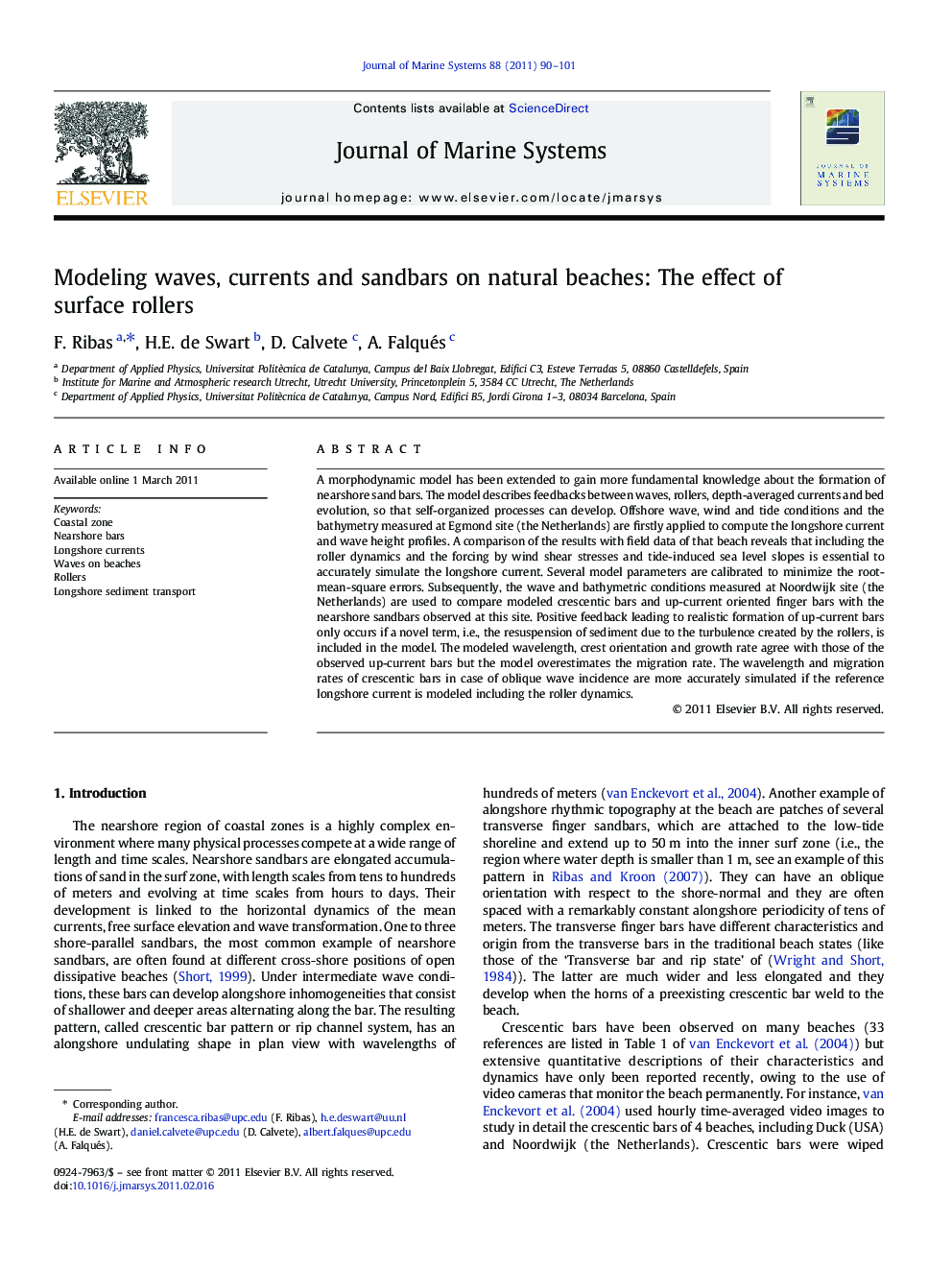| Article ID | Journal | Published Year | Pages | File Type |
|---|---|---|---|---|
| 4548441 | Journal of Marine Systems | 2011 | 12 Pages |
A morphodynamic model has been extended to gain more fundamental knowledge about the formation of nearshore sand bars. The model describes feedbacks between waves, rollers, depth-averaged currents and bed evolution, so that self-organized processes can develop. Offshore wave, wind and tide conditions and the bathymetry measured at Egmond site (the Netherlands) are firstly applied to compute the longshore current and wave height profiles. A comparison of the results with field data of that beach reveals that including the roller dynamics and the forcing by wind shear stresses and tide-induced sea level slopes is essential to accurately simulate the longshore current. Several model parameters are calibrated to minimize the root-mean-square errors. Subsequently, the wave and bathymetric conditions measured at Noordwijk site (the Netherlands) are used to compare modeled crescentic bars and up-current oriented finger bars with the nearshore sandbars observed at this site. Positive feedback leading to realistic formation of up-current bars only occurs if a novel term, i.e., the resuspension of sediment due to the turbulence created by the rollers, is included in the model. The modeled wavelength, crest orientation and growth rate agree with those of the observed up-current bars but the model overestimates the migration rate. The wavelength and migration rates of crescentic bars in case of oblique wave incidence are more accurately simulated if the reference longshore current is modeled including the roller dynamics.
Research Highlights► A morphodynamic model is applied to understand the formation of nearshore sandbars. ► The model includes the feedback between waves, rollers, currents and bed evolution. ► Including rollers and wind is crucial to accurately simulate the longshore current. ► Up-current oriented bars can only be modeled if resuspension by rollers is included. ► Crescentic bar features are more accurately modeled if roller dynamics is included.
